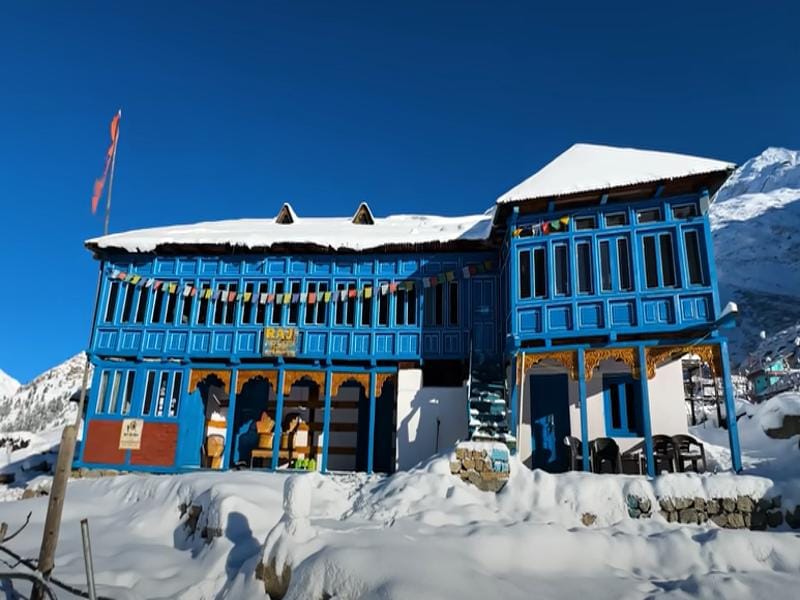Best Time to Visit Chitkul

Best Time to Visit Chitkul – Season-Wise Travel Guide to the Last Village of India
If you’re looking for a peaceful escape amid the untouched beauty of the Himalayas, Chitkul is where your heart will find its rhythm. Known as the last inhabited village near the Indo-Tibetan border, Chitkul in Himachal Pradesh lies at an altitude of around 3,450 meters and offers a blend of natural splendor, cultural charm, and Himalayan adventure. But before you pack your bags, it’s important to know the best time to visit Chitkul—because every season here paints a different, mesmerizing picture.
In this detailed travel guide, we’ll explore the weather conditions, seasonal highlights, and the best time to visit Chitkul for snow, along with tips to plan your perfect Kinnaur Valley adventure.
Why Visit Chitkul?
Chitkul, nestled in the breathtaking Kinnaur Valley, is a haven for nature lovers and explorers alike. It’s surrounded by apple orchards, serene meadows, and snow-draped mountains. The Baspa River flows gently by, adding to the village’s calm and refreshing aura.
Just 235 km from Shimla, Chitkul is part of a scenic circuit that includes Kalpa and Sangla Valley—two equally stunning destinations known for their ancient temples, wooden houses, and views of Kinner Kailash, the sacred Himalayan peak.
From adventure seekers to peace finders, every traveler discovers something personal here. But depending on what you’re looking for—lush green valleys, snow-capped peaks, or blooming apple orchards—the best time to visit Chitkul Himachal Pradesh can vary.
Understanding Chitkul’s Climate
Chitkul’s weather is heavily influenced by its high altitude. Temperatures can range from a warm 25°C in summer to freezing -10°C in winter. Snowfall, monsoon showers, and clear sunny skies all bring a unique charm to this Himalayan village.
Let’s break down the seasons in Chitkul to help you decide when to go.
🌸 Summer in Chitkul (April – June)
The Best Time for Comfortable Travel
Temperature: 8°C to 30°C
Best For: Sightseeing, nature walks, and local exploration
Summer is widely considered the best time to visit Chitkul Himachal Pradesh. The weather remains pleasant, roads are open, and the valley comes alive with vibrant greenery. It’s the ideal time to experience Kinnaur’s beauty without the chill of winter.
During these months, apple orchards start to bloom, rivers run full, and the air feels crisp but welcoming. Whether you’re walking through the Sangla Valley, exploring the Kamru Fort, or simply enjoying a riverside picnic, summer offers the perfect balance of comfort and adventure.
Things to Do in Summer
- Camping and Stargazing: The clear skies in Chitkul are perfect for stargazing and Milky Way photography.
- Local Culinary Workshops: Learn traditional Himachali recipes with local hosts.
- River Rafting: The Baspa River offers an exciting rafting experience.
- Cultural Immersion: Stay in local homestays, interact with villagers, and explore tribal crafts.
- Photography Tours: Capture breathtaking mountain vistas and blooming orchards.
Travel Tip: June can bring occasional pre-monsoon showers, so check the weather forecast before your trip.
🌧️ Monsoon in Chitkul (July – September)
For Solitude Seekers and Nature Lovers
Temperature: 10°C to 25°C
Best For: Cultural festivals, apple picking, peaceful retreats
The monsoon paints Chitkul in shades of emerald green. Although this isn’t the most popular time to visit due to frequent rains and potential landslides, it’s perfect if you prefer tranquility and lower travel costs.
The region’s apple season peaks during this period, so you’ll see orchards heavy with red and golden fruits. Monsoon also brings local festivals to life, offering visitors a glimpse into Himachal’s vibrant traditions.
Things to Do in Monsoon
- Apple Orchard Visits: Taste freshly plucked apples from local farms.
- Festivals: Witness regional rituals and traditional dances in the villages.
- Short Nature Walks: Explore lush surroundings when the rains take a break.
- Cultural Experiences: Interact with locals and enjoy Himachali hospitality.
Caution: Avoid long road trips during heavy rains as landslides are common on mountain roads.
❄️ Winter in Chitkul (October – March)
The Best Time to Visit Chitkul for Snow
Temperature: -5°C to 10°C
Best For: Snow lovers, photographers, and adventure seekers
If snow-covered mountains and frosty adventures are your dream, then winter is undoubtedly the best time to visit Chitkul for snow. The valley turns into a white wonderland with snowflakes carpeting rooftops, pine trees, and meadows.
However, Chitkul can become quite challenging during peak winter. Temperatures drop below freezing, and road access may be limited, especially between December and February. Hotels may also have limited running water due to frozen pipelines.
Still, early winter (October to November) is magical—offering a balance between accessibility and snow views.
Things to Do in Winter
- Trekking Adventures: Explore Borasu Pass and nearby winter trails (only for experienced trekkers).
- Sangla Valley Excursions: Experience snow-covered villages and forests.
- Photography: Capture the magical Himalayan sunrise over snow peaks.
- Cultural Exploration: Warm up with grape wine from Ribba village or interact with locals by the fireplace.
Travel Tip: Carry thermal wear, snow boots, and keep emergency essentials handy. Early booking is advisable for winter stays.
🚗 Delhi to Chitkul Road Trip: A Journey Through Paradise
The road trip from Delhi to Chitkul is one of India’s most scenic drives—spanning approximately 575 km. The route takes you through changing landscapes: from bustling plains to pine-clad hills and finally to the snow-kissed valleys of Kinnaur.
Route Overview
- Delhi → Shimla: (340 km) The gateway to the Himalayas. Enjoy colonial charm and pine forests.
- Shimla → Kalpa: (220 km) Famous for apple orchards and views of Kinner Kailash.
- Kalpa → Sangla: (40 km) A lush valley flanked by mountains and wooden homes.
- Sangla → Chitkul: (22 km) The final stretch leading to the “Last Village of India.”
This drive is filled with postcard-perfect views and plenty of stopovers for photos, food, and exploration.
Tip: Travel between April and October for the best road conditions and open routes.
🗓️ Month-by-Month Guide to Visiting Chitkul
| Month | Weather | Highlights |
|---|---|---|
| January – February | Extreme cold, heavy snow | Snowfall, frozen rivers, adventure for thrill-seekers |
| March – April | Chilly to mild | Snow melts, meadows bloom |
| May – June | Pleasant | Best for sightseeing, outdoor activities |
| July – August | Rainy | Green landscapes, fewer tourists |
| September – October | Cool and clear | Ideal for photography and treks |
| November – December | Cold and snowy | Early snow views, peaceful stays |
🧭 Nearby Attractions from Chitkul
While in Chitkul, explore nearby destinations that complete your Kinnaur Valley experience:
- Sangla Valley: Known for its breathtaking river views and wooden architecture.
- Kalpa: Offers mesmerizing views of Kinner Kailash.
- Ribba Village: Famous for pine nuts and homemade grape wine.
- Kamru Fort: A cultural landmark near Sangla with intricate woodwork.
- Baspa River: Perfect for riverside camping and photography.
🏡 Where to Stay in Chitkul
Accommodation in Chitkul ranges from cozy wooden homestays to boutique mountain lodges. Most offer stunning views of the Baspa River and snow peaks.
Recommended stays:
- Local homestays (for authentic Himachali hospitality)
- Riverside camps (for adventure seekers)
- Boutique guesthouses (for comfort and privacy)
Pro Tip: In winter, confirm heating facilities before booking.
🎒 Travel Tips for Chitkul Visitors
- Carry warm clothing year-round – even summers can be chilly at night.
- Avoid monsoon road trips due to landslide risks.
- Stay hydrated and acclimatize gradually to avoid altitude sickness.
- Support local tourism by buying handmade crafts and staying in village homestays.
- Respect nature: Don’t litter or disturb wildlife.
🌄 Conclusion: When Is the Best Time to Visit Chitkul?
The best time to visit Chitkul truly depends on your travel goals.
- For pleasant weather and sightseeing: April to June
- For solitude and green beauty: July to September
- For snow and adventure: October to March
Every season reveals a different side of Chitkul’s charm—from summer’s warmth to winter’s white magic. Whether you’re planning a Delhi to Chitkul road trip, a Kinnaur Valley exploration, or simply chasing the snow, Chitkul promises memories that stay forever.
So, pack your bags, set your heart to the Himalayas, and let Chitkul—the last village of India—redefine your sense of wonder.
